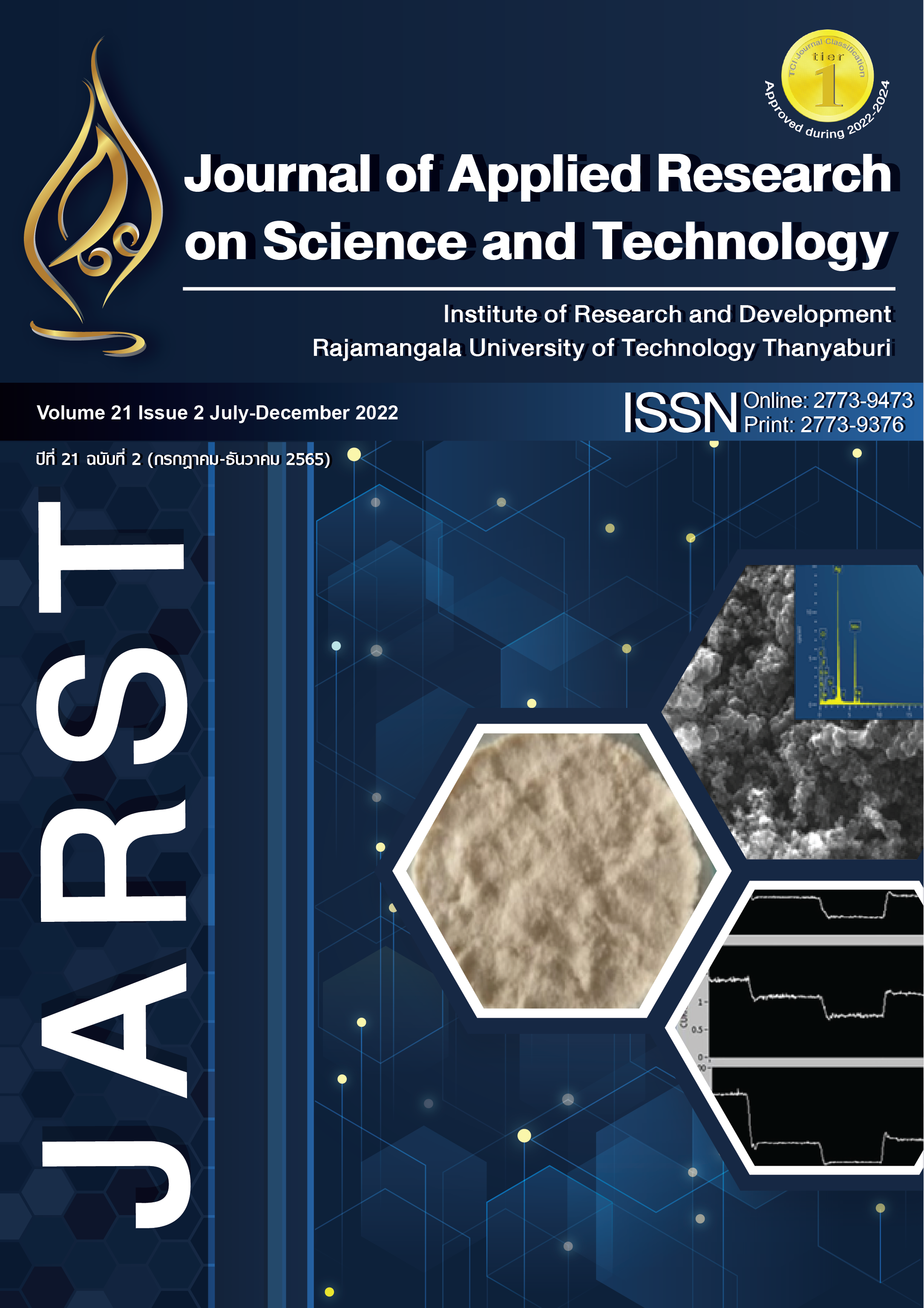Development of Geographic Information Systems to Lead to Data-Driven Agriculture
Main Article Content
Abstract
This research aims to apply geographic information systems work together with remote sensing for the preparation of Conservation Plant Database under the Royal Initiative of Her Royal Highness Princess Maha Chakri Sirindhorn and Rajamangala University of Technology Lanna to collect data of Yam planting area in Chiang Rai to be able to be used in the conservation of plant species. This research was conducted to design the database structure by QGIS together with raster image processing with R programming and presenting by Microsoft Power BI. The developed database consists of Yam, botanical characteristics, planting location, planting period, yield period, Yam grower, plant utilization (food or medical), type of soil in the planting area, climate, and a numerical height model of the planting area. As well as, remote sensing data which are Normalized Difference Vegetation Index, Green Normalized Difference Vegetation Index, Normalized Difference Water Index, and Tasseled Cap Transformation. Consisting of Brightness index, Greenness index, and Wetness index, etc. Besides, the researcher analyzed additional data from the developed database to explain the spatial change of Yam cultivation in Chiang Rai Province. According to Aerial photographs during January – April for the past 5 years (2017-2021). The results of the analysis revealed that the trend line of Normalized Difference Vegetation Index (NDVI), Green Normalized Difference Vegetation Index (GNDVI), and Greenness indicate that plant cover in the survey area tends to decrease. Furthermore, Normalized Difference Water Index (NDWI) and Wetness index have a downward trend as well. From the results of such an analysis, may affect the abundance and extinction of Yam. Thus, the development of the above database can be used to make decisions about plant conservation in the future.
Article Details

This work is licensed under a Creative Commons Attribution-NonCommercial-NoDerivatives 4.0 International License.
References
Homhual R, Wongmaneeroj M, Jamjumrus S, Promdany S, Tongdonae W, Donsomprai P et al. Propagation of Dioscorea spp. for alternative food resources. JSTKU. 2017;6(1):1-13. Thai.
Homhual R, Wongmaneeroj M, Jamjumrus S, Promdang S,Tongdonae W. Conservation and Propagation of Jam [Internet]. Bangkok: Kasetsart University Research and development institute: 2560. [citedd 21 Dec 9]. Availability From: https://www3. rdi.ku.ac.th/?p=40748. Thai.
Postharvest Technology Innovation Center Chiangmai University. Jam Cropping to Commercial [Internet]. Chiang Mai: Postharvest Technology Innovation Center Chiangmai University; 2552. [cited 21 Dec 9]. Availability From: https://www.phtnet.org/news52/view-news.asp?nID=42. Thai.
Suratvanit S, Maniin P, Nantachot C, Kaeocharean P. Soil Fertility Survey by Using Remote Sensing Technique. Paper presented at Soil survey soil information and land use: Title of meeting the 5th National Soil and Fertilizer Conference; 17 Aug 1-2 of meeting; Bangkok. Thai.
Pianchan P, Konsongsaen W, Lenruang S, Yachaisri A. Estimation of Longan Yield by Vegetation Indices in Phayao Province. Bangkok: Kasetsart University; 2019. Thai.
Pattanasak P. Relationship between Tasseled Cap Transformation and Normalized Difference Vegetation Index in the City of Chiang Mai. RUSID. 2020;1(1):1-9. Thai.
Samarawickrama U, Piyaratne D, Ranagalage M. Relationship between NDVI with Tasseled cap Indices: A remote sensing based analysis. IJIRT. 2017;3(12):13-9.
Pholgerddee P. The application of Geo-Informatics Technology for the vegetation index and vegetation index and humidity study: A case study analysis of drought in the special Economic Eastern Region. Chonburi: Burapha University; 2019. Thai.
Seekaw A, Mongkolsawat C, Suwanwerakamtorn R. Using standardized vegetation index to assess drought areas in northeast Thailand. Title of meeting Genentech. 2013;13 Dec 25-27 of meeting; Nonthaburi. Thai.
U.S. Geological Survey (USGS). Landsat—Earth Observation Satellites [Internet]. Sioux Falls: U.S. Geological Survey (USGS); 2015. [cited 22 Sep 1]. Availability From: https://pubs.usgs.gov/fs/2015/3081/fs20153081.pdf
Iqbal MZ, Mustafa G, Sarwar N, Wajid SH, Nasir J, Siddque S. A review of star schema and snowflakes schema. INTP. 2019;(1198):129-40.
Pikulyam W, Maneerat P, Chirawichitchai N. Development of data visualization for particulate matter 2.5 micrometers analysis in bangkok. JARST. 2564;20(1):157-64. Thai.
Rouse JW, Haas RH, Schell JA, Deering DW. Monitoring vegetation systems in the Great Plains with ERTS. Texas: Remote Sensing Center Texas A&M University; 1974. Report number 19740022614. Report agency NASA.
ESRI. GNDVI: Green Normalized Difference Vegetation Index. [Internet]. United States: ESRI; 2021. [cited 17 Jul 22]. Availability From: https://pro.arcgis.com/en/pro-app/latest/arcpy/image-analyst/gnvdi.htm.
European Drought Observatory. NDWI: Normalized Difference Water Index [Internet]. United Kingdom: European Drought Observatory; 1996. [cited 22 Sep 1]. Availability From: https://edo.jrc.ec.europa.eu/documents/factsheets/factsheet_ndwi.pdf
Kauth RJ, Thomas GS. The tasselled cap—a graphic description of the spectral-temporal development of agricultural crops as seen by LANDSAT. LARS Symposia. 1976:41-51.


